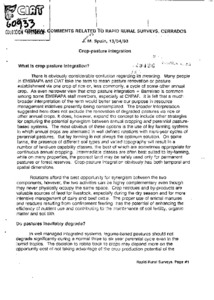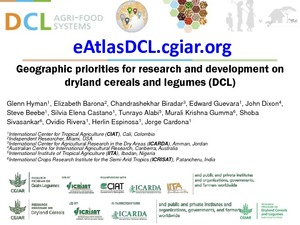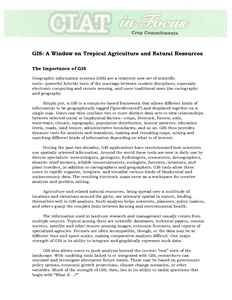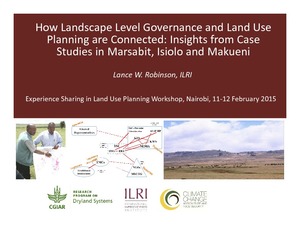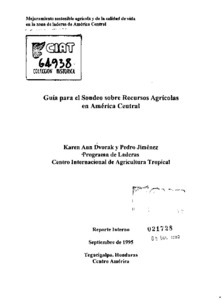land use
AGROVOC URI: http://aims.fao.org/aos/agrovoc/c_4182
General comments related to rapid rural surveys, Cerrados : crop pasture integration
General evolution of the agricultural potential of the Bolivian Amazon
Genetic diversity and symbiotic efficiency of legume nodulating bacteria from different land use systems in taita taveta, kenya
Populations of Legume Nodulating Bacteria (LNB) were assessed under glasshouse conditions in soils collected from selected landuse systems in Taita Taveta district, Kenya. The populations were estimated by the most-probable-number (MPN) plant infection technique using Macroptilium atropurpureum (DC.) Urban (siratro) as the trap plant. The LNB populations varied from 1.1 × 10 to 6.1 × 106 cells g-1 of soil. There was apparent landuse effect on abundance of LNB with maize-bean cropping system and shrubland giving high population estimates.
Geological and geomorphological controls on groundwater occurrence in a hard rock region
Remote sensing and GIS tools have broadly helped hydrogeologists to delineate the groundwater prospective zones for watershed development and management. The origin, movement and existence of groundwater depends on several factors such as slope, drainage density, land use, geology, lineament density and geomorphology. Based on these, the mapping and identification of groundwater potential zones were carried out in a part of Nalgonda district, Telangana, India.
Ghana
Including inland water bodies, Ghana covers 238,539 square kilometers and is located on the south central coast of West Africa. The country shares bor¬ders in the east with Togo, in the north with Burkina Faso, and in the west with Côte d’Ivoire. The topography of Ghana is mainly undulating, with most slopes less than 5 percent and many not exceeding 1 percent. The topography of the high rainforest is, however, mainly strongly rolling. The uplifted edges of the Voltarian basin give rise to narrow plateaus between 300 and 600 meters in elevation (Boateng 1998).
Global food demand and the sustainable intensification of agriculture
Global food demand is increasing rapidly, as are the environmental impacts of agricultural expansion. Here, we project global demand for crop production in 2050 and evaluate the environmental impacts of alternative ways that this demand might be met. We find that per capita demand for crops, when measured as caloric or protein content of all crops combined, has been a similarly increasing function of per capita real income since 1960. This relationship forecasts a 100–110% increase in global crop demand from 2005 to 2050.


